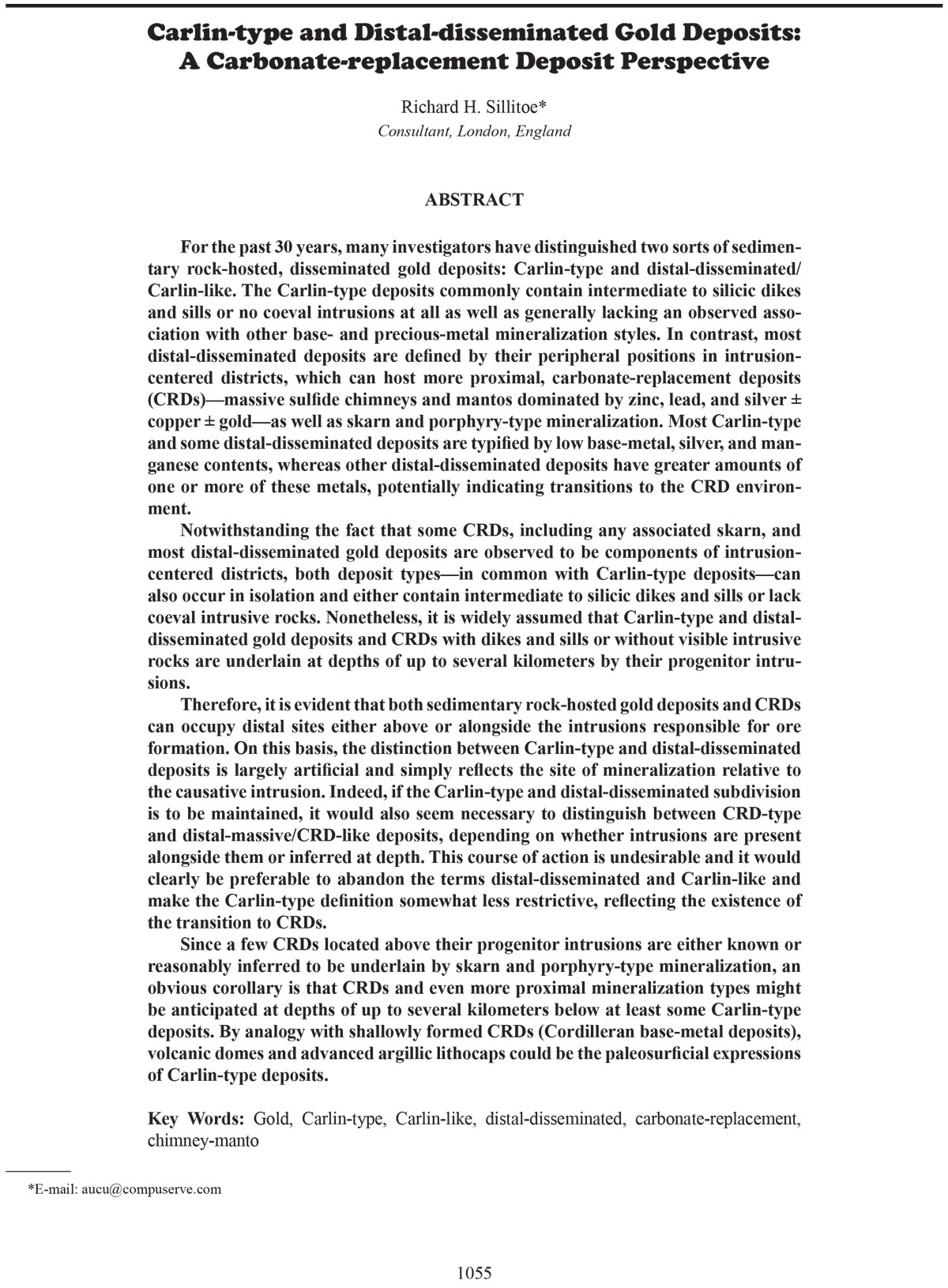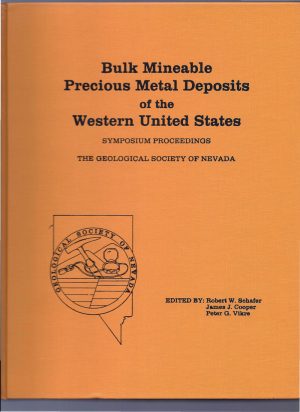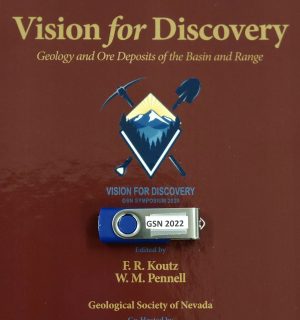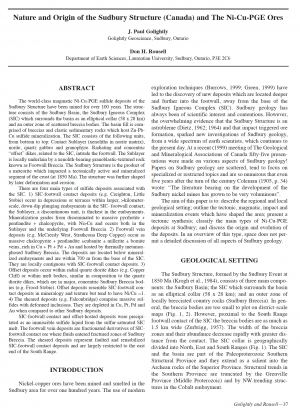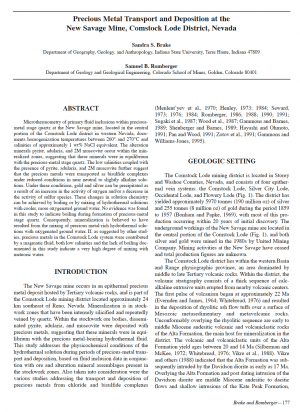Description
For the past 30 years, many investigators have distinguished two sorts of sedimentary rock-hosted, disseminated gold deposits: Carlin-type and distal-disseminated/
Carlin-like. The Carlin-type deposits commonly contain intermediate to silicic dikes
and sills or no coeval intrusions at all as well as generally lacking an observed association with other base- and precious-metal mineralization styles. In contrast, most
distal-disseminated deposits are defined by their peripheral positions in intrusioncentered districts, which can host more proximal, carbonate-replacement deposits
(CRDs)—massive sulfide chimneys and mantos dominated by zinc, lead, and silver ±
copper ± gold—as well as skarn and porphyry-type mineralization. Most Carlin-type
and some distal-disseminated deposits are typified by low base-metal, silver, and manganese contents, whereas other distal-disseminated deposits have greater amounts of
one or more of these metals, potentially indicating transitions to the CRD environment.
Notwithstanding the fact that some CRDs, including any associated skarn, and
most distal-disseminated gold deposits are observed to be components of intrusioncentered districts, both deposit types—in common with Carlin-type deposits—can
also occur in isolation and either contain intermediate to silicic dikes and sills or lack
coeval intrusive rocks. Nonetheless, it is widely assumed that Carlin-type and distaldisseminated gold deposits and CRDs with dikes and sills or without visible intrusive
rocks are underlain at depths of up to several kilometers by their progenitor intrusions.
Therefore, it is evident that both sedimentary rock-hosted gold deposits and CRDs
can occupy distal sites either above or alongside the intrusions responsible for ore
formation. On this basis, the distinction between Carlin-type and distal-disseminated
deposits is largely artificial and simply reflects the site of mineralization relative to
the causative intrusion. Indeed, if the Carlin-type and distal-disseminated subdivision
is to be maintained, it would also seem necessary to distinguish between CRD-type
and distal-massive/CRD-like deposits, depending on whether intrusions are present
alongside them or inferred at depth. This course of action is undesirable and it would
clearly be preferable to abandon the terms distal-disseminated and Carlin-like and
make the Carlin-type definition somewhat less restrictive, reflecting the existence of
the transition to CRDs.
Since a few CRDs located above their progenitor intrusions are either known or
reasonably inferred to be underlain by skarn and porphyry-type mineralization, an
obvious corollary is that CRDs and even more proximal mineralization types might
be anticipated at depths of up to several kilometers below at least some Carlin-type
deposits. By analogy with shallowly formed CRDs (Cordilleran base-metal deposits),
volcanic domes and advanced argillic lithocaps could be the paleosurficial expressions
of Carlin-type deposits.

